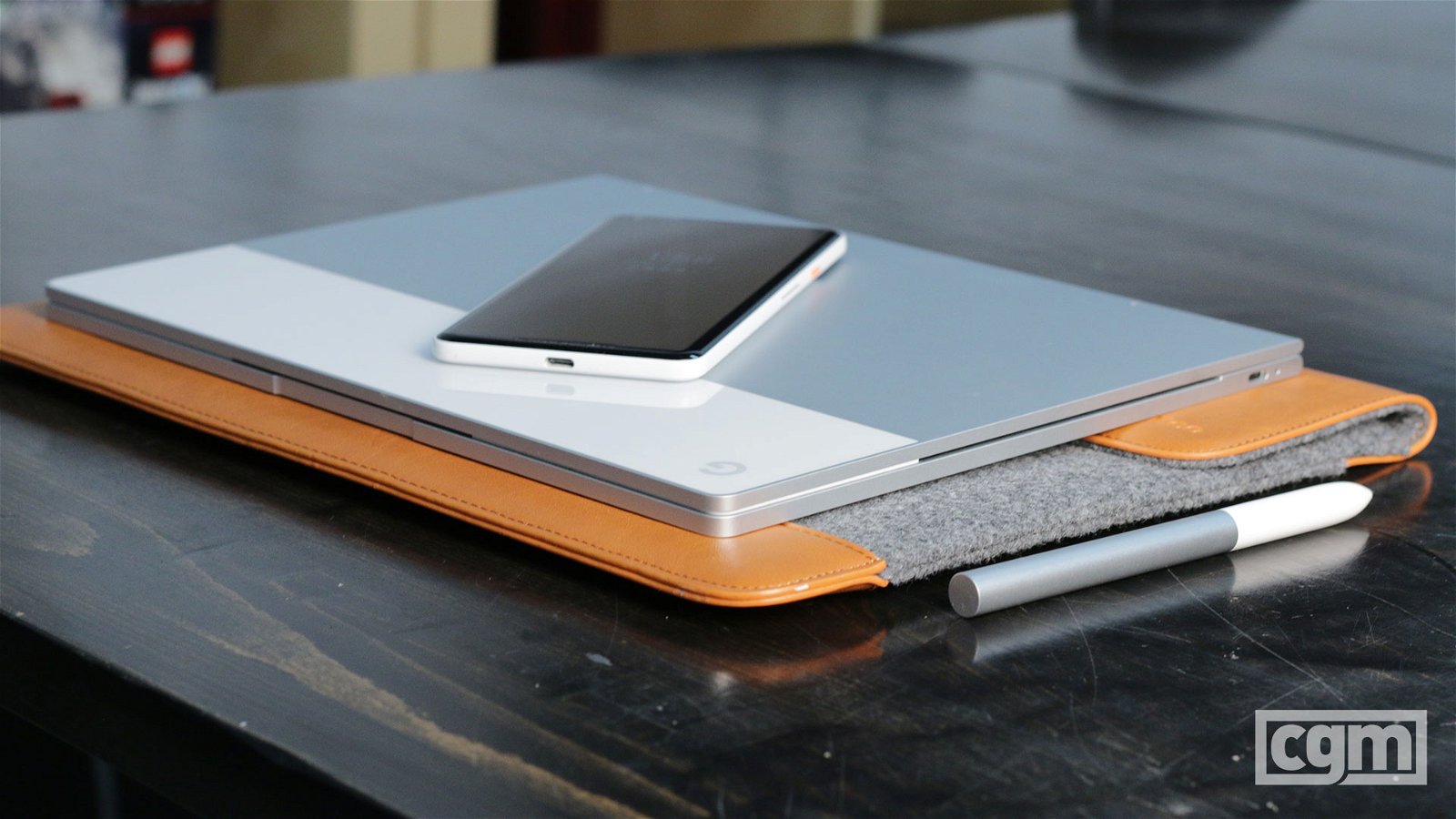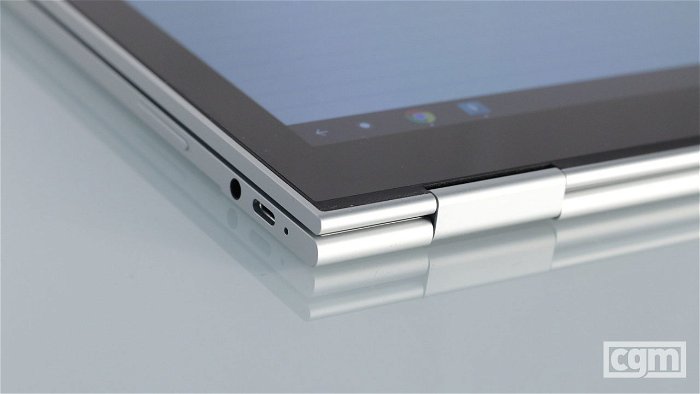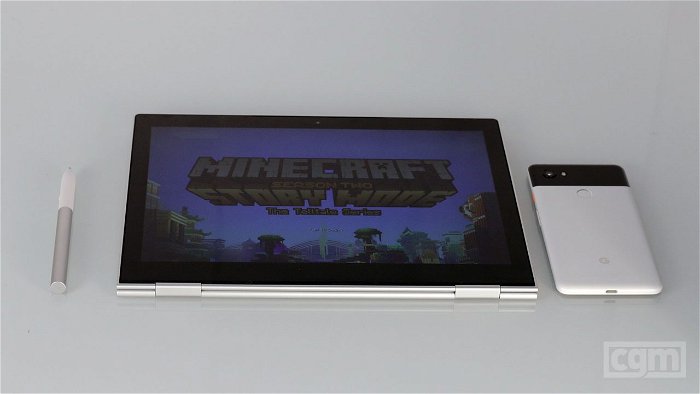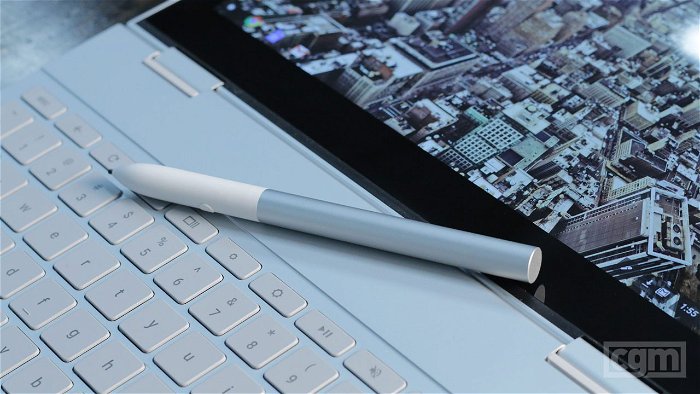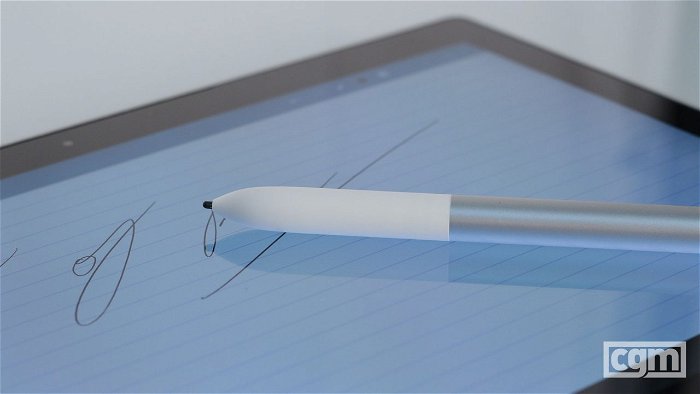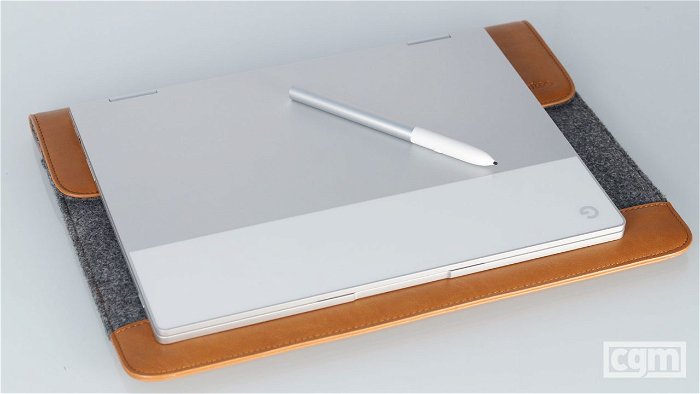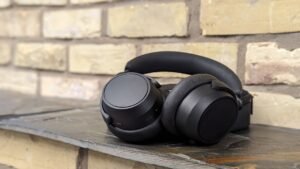Chrome OS has been gaining traction in recent years. Being a low-cost option that allows most people to do all their computing needs in a low overhead option, it is no wonder it is garnering a following. Google is not content in having Chrome OS running on exclusively low-end hardware, and for this fall’s lineup, the company is releasing the $999 USD convertible laptop, the Google Pixelbook. Being one of the most beautiful laptops currently available on top of Chrome OS maturing as a platform, the Pixelbook makes an attractive, albeit unique offering to the laptop market in 2017.
To review the Pixelbook, I did something different than I normally do: I used it as my primary travel laptop, only using my desktop for office work. I did this to immerse myself in the ecosystem and see if the set of tools on the Chrome OS platform—with the addition of Android Apps—would allow for most of my computer needs. Being a newer platform, Chrome OS lacks many of the apps people expect on MacOS, Windows, or even Linux. So to really experience what the Pixelbook had to offer, the best way was to engross myself entirely in the platform.
Before we get into what the Pixelbook was like to use overall, I would be doing this review a disservice were I not to talk about the design and overall feel of the laptop. While the concept of convertible laptops has been around for a while—in many form factors—few achieve the brilliance of what the Pixelbook has on offer.
With a weight of just over 2.5 lbs. and a thickness of just 10mm, the Pixelbook is near impossibly thin and light, making it one of the most convenient laptops to take on road trips or even just to and from work.
The all metal and glass construction give the Pixelbook a feel of quality, and the subtle touches such as the white section of glass on the back of the screen harken back to the design seen on the Pixel series of phones. It is a laptop that oozes quality and design from all angles, and believe me, using it in the wild will turn heads.
Google Pixelbook Specs
| Google Pixelbook | |
|---|---|
| Screen | 12.3” 2400×1600 (235 ppi) Quad HD LCD |
| Processor | 1.2GHz Intel Core i5-7Y57 (dual-core, 4MB cache, up to 3.3GHz |
| Video | Intel HD Graphics 615 |
| Memory | 8GB or 16GB |
| Storage | 128GB, 256GB, or 512GB NVMe solid state internal storage |
| Connectivity | Wi-Fi: 802.11 a/b/g/n/ac,3 2×2 (MIMO), dual-band (2.4 GHz, 5.0 GHz)Bluetooth® 4.2 |
| Ports | Two USB-C charging, 4k display, and quicker data transfer3.5 mm headphone jack |
| Baterry | 41 Whr battery |
| Operating system | Chrome OS |
| Size | Height: 10.3 mm aluminum unibodyLength: 290.4 mmWidth: 220.8 mm |
| Weight | 1.11 kg (2.45 lbs) |
The keyboard is one of the best I have ever used. The backlit, chicklet style keyboard offers plenty of space, while the travel of the keys gives a satisfying level of click that makes it a true joy to type on.
Just below the keyboard is the white silicone palm rests that call back to that white on metal aesthetic observed on the back of the laptop. While a bit odd at first, after typing on the laptop for a while, they provide the perfect amount of comfort without being distracting. They also act as a separation between the screen and the metal body that ensures the Pixelbook stays safe when it is closed up in your bag.
Sitting between the two silicone palm rests is the white glass trackpad. As one would expect (or at very least hope) from a laptop of this level, it is a joy to use. With a great feel and an accuracy level that can is comparable to what is seen on MacBooks.
While the trackpad is fantastic, the speakers I would only call subpar. Located under the keyboard of the unit, the speakers are good for most standard audio listening, although, with no real bass to speak of, the audio profile experience on the Pixelbook is far from optimal. I will say I like that even when in tablet mode the sound managed to sound clear, without the muffled audio experience I have seen on other convertible laptops.
The display of the Pixelbook, while not one of the best screens on the market, more than makes for a fantastic viewing experience. The 12.3” touchscreen has a 3:2 aspect ratio with a resolution of 2400 x 1600. It looks stunning, is bright, and can be used even on a sunny day. If there is one gripe I have to point out it is the bezels. I see why they are needed, giving a place to grab in tablet mode, but with so many moving to reduce this area as much as possible, it is strange seeing Google release a product like this in late 2017.
Under the hood of the Pixelbook—on the base model we tested—is a seventh generation Intel Core i5 processor, 8GB RAM and 128GB storage. It is also possible to get the Pixelbook with an i7, 16GB RAM and 512GB storage, but even at the base configuration, it is overkill for what Chrome OS needs. Even with over ten tabs open, Android apps running, and a YouTube video playing, the machine never showed any sign of slowing down. The fact this is all achieved without the need for any level of fans or the Pixelbook getting hot is a testament to the design by Google.
For IO, Google has granted the Pixelbook two USB-C ports, one on either side of the unit, and yes, both can be used to charge the unit and allow you to expand the ports with dongles. On the left-hand side, the Pixelbook also has a 3.5mm headphone jack, a volume rocker, and a power button.
While the laptop is a marvel of design and craftsmanship, people buy laptops for what they do, not how they look, and this is where things get a bit more complicated. The Pixelbook, as I mentioned earlier runs Chrome OS, and it comes with all the limitations and advantages that entails.
Chrome OS is built on Linux, but Google has built from that one of the most rock solid, stable, and secure desktop OS’s currently on the market. Never in my time using the Pixelbook did I experience any crashes or any fear of getting a virus.
With that stability and security comes some limitations. Until recently Chrome OS had a very limited series of apps. Basically, it just a way to run the Chrome web browser. It did that job very well, and if you live your life based on the Google apps ecosystem, you will be able to do most of your everyday tasks. Sadly, this also means if you are a creator that needs more advanced tools such as video or audio editing software, you may be out of luck.
Google claims the Pixelbook has a 10hour battery, and in testing, running Android and having a series of tabs open in Chrome, I would say that is close to accurate. I managed on average 9-10 hours on a single charge, and while this dipped while running more advanced Android games, I would say I was impressed with how the Pixelbook faired, especially considering its svelte form factor.
Games that did work, worked well, I tested a series of games throughout working with the Pixelbook. Games like Minecraft: Story Mode, and The Banner Saga worked perfectly. There was no sign of stuttering, graphical glitches or even slow down. If I was not aware I was playing Android games, I would be sure I was working on a native application. Google has done some real work ensuring these games work, and while not everything worked, those that did, worked perfectly.
Now, I should mention that the Pixelbook is a convertible laptop, and the hinge Google uses for the device makes it a joy to flip to tablet mode, tent mode, and everything in between. While I did not find myself using it in tablet mode all that often, for the most part, I had no troubles and the OS worked in that form factor. I did notice a few minor hiccups, especially with the Chrome OS touch keyboard missing some of the features I would expect from a modern tablet keyboard, but for the most part, it works, at least for minor tasks.
Before we go any further, we should touch on the elephant in the room: Android apps. With the Pixelbook, Android Apps are now at the forefront of the Chrome OS experience. They help bridge the gap between what Chrome OS can do as a platform and other OS offerings. In my experience, they worked, and in some cases worked great.
Apps—like most of the Google Suite, Microsoft Office, and even Netflix—ran smoothly. They resize as expected, can be moved around, and feel like part of the native Chrome OS experience. Now drag and drop between Chrome and Android apps is currently non-existent, at least from testing, but everything else works as you would hope. It is these few apps that make me hopeful for Android apps on the platform.
Sadly not everything worked as well as these few apps. Many felt like phone apps or games running on a laptop. Many are in a virtual orientation, some needed to restart to be set in full screen, and some simply crashed when they were started. It is still in the early days of the platform, and I was surprised at how the apps that ran, ran very well, with no stuttering or major issues. but it is clear that developers need to do some work to ensure games and apps can run as intended on the platform.
It is amazing to see how far Google has come from the Beta to running apps like Facebook Messenger or Spotify so well, but it still feels as if Android apps on Chrome OS are second class citizens. There needs to be more work put into making the Android App experience feel more natural, ensure things crash less and allowing apps to work with the native desktop environment when possible.
For most cases, it is just a matter of Google helping developers move their apps over to a bigger screen using the latest tech, but this is an issue Google has struggled with for years. Look at the Android Tablet market to see how that is going. But if they can make it work, and build the Chrome OS Android library, it does make for some exciting possibilities, even just looking at what works now.
Not to be left out of the stylus-future most modern laptops are embracing, Google made the Pixelbook Pen available. For $99 USD ($129 CAD) you can have an active stylus that, while it may seem like a needless expense, actually expands on what makes the Pixelbook so special. I should mention that there is noticeable lag when using older android stylus apps. The ones that use the newest API’s were smooth and acted as one would hope, but the older models were almost unusable making for a less than ideal experience. For a pen that costs $99, you hope to have a slew of uses out of the box, sadly that is not the case at this time.
While the app selection may be on the low side, the stylus can be used to navigate the desktop and this seems to be the way the Pixelbook is meant to be used. It is a quick and intuitive way to use the OS, especially in tablet mode.
While the Pen is very comfortable to hold, I am a little disappointed Google did not include a place to attach the pen to the unit. If you are not using the pen, you will need to find a place to stow the stylus, as it does have a tendency to roll away when just left on the desk. The Pixelbook Pen does, however, pack a fun little feature: with the help of the button on the side, it can be used to select part of the screen for use with Google Assistant.
Oh yes, the PixelBook is the first Chrome OS-based device with Google Assistant built right into the OS. It can be accessed as discussed above, and with the help of the Pixelbook Pen, it can also be called by the simple tapping of the Google Assistant key on the keyboard. While I am not a fan of assistance on desktop operating systems, I actually found Google Assistant handy to have around, especially when working and needing to quickly check up on something.
The Pixelbook is a wonder of design and technology, but it also feels like a step into a Chrome OS future I am not sure everyone is ready for. Overall the device feels very well put together, the OS is evolving in the ways it needs to, and with new features added every few months, it is a platform that packs loads of potential. But sadly, potential does little for people who need a feature or application the platform lacks right now.
If you are someone who does writing or spends most of their time in the browser, the Pixelbook could be a perfect laptop for your needs. However, if you are someone who uses their laptop to create, be it images, video, or audio, the platform may not be ready for that—just yet. Whatever your reason, if you feel Chrome OS is right for you, the Pixelbook is the flagship device for the platform, and is the new tech to beat as my favourite device of 2017.
A retail version of this device was provided by the manufacturer for this review. You can find additional information about CGMagazine’s ethics and review policies and procedures here.
